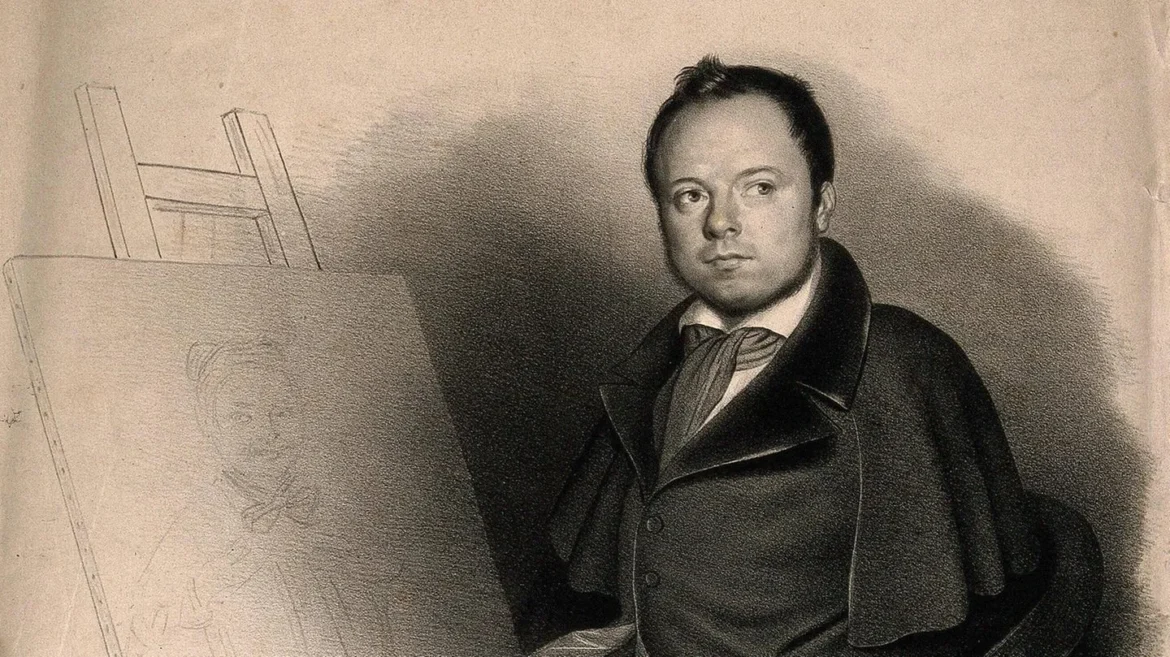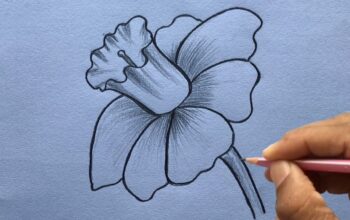Louis Joseph César Ducornet (1806–1856) was a French painter and a symbol of artistic determination and perseverance. Born without arms, Ducornet defied physical limitations and became renowned for his ability to paint and draw using only his feet. His life is an inspiring testament to human resilience, artistic genius, and the refusal to be limited by disabilities.
Early Life and Challenges
Ducornet was born on January 10, 1806, in Lille, France. His congenital disability, amelia, left him without arms, a condition that many would see as a significant obstacle to a career in fine arts. However, Ducornet displayed a remarkable interest in drawing from a very early age. By using his feet, he learned to handle drawing tools with incredible precision, showcasing both his talent and relentless passion for art.
His parents, recognizing his extraordinary aptitude, encouraged him to pursue his interest, and Louis Joseph César Ducornet began formal training under local artists. He later became a pupil of François Louis Joseph Watteau, a respected artist and teacher in Lille, who played a crucial role in shaping Ducornet’s early artistic development.
Artistic Style and Influences
Louis Joseph César Ducornet specialized in historical and religious subjects, often rendering detailed and expressive scenes that mirrored the Romantic style of the time. His works were deeply influenced by the neoclassical traditions, as well as the growing Romanticism movement in Europe. His attention to detail, especially in the depiction of the human form, landscapes, and intricate backgrounds, made him stand out among his contemporaries.
He exhibited his works at the Paris Salon, a prestigious annual art exhibition, and his paintings received considerable praise from critics and art enthusiasts alike. His ability to compete in a field dominated by able-bodied artists made his achievements even more significant.
Major Works and Achievements
One of Louis Joseph César Ducornet most notable works is his painting “The Death of Abel,” a dramatic and emotionally charged depiction of the biblical story of Cain and Abel. The piece showcases Ducornet’s ability to convey complex emotions and vivid imagery, a hallmark of his style.
Other significant works include “The Annunciation” and “The Adoration of the Magi,” both of which reflect his interest in religious themes and his mastery of classical composition. These works demonstrated his incredible skill in handling light, shadow, and human expression.
Louis Joseph César Ducornet paintings were highly regarded for their emotional depth, narrative strength, and technical prowess. His achievements were recognized in 1827 when he received the prestigious Legion of Honour, an award that celebrated his contributions to French art and his exceptional talent.
Legacy and Impact
Louis Joseph César Ducornet life and career remain an enduring source of inspiration for artists and individuals with disabilities. His determination to overcome his physical limitations and excel in his field underscores the belief that true talent and passion can transcend barriers. Ducornet’s works, though not as widely known today, continue to be appreciated by those who admire the Romantic era and the stories of individuals who defy the odds.
His legacy is not only one of artistic achievement but also one of human resilience. Ducornet’s story encourages us to push beyond the constraints we may face, proving that with perseverance, even the most daunting obstacles can be transformed into opportunities for greatness.
The Personal Side of Louis Joseph César Ducornet
 Beyond his extraordinary artistic career, Louis Joseph César Ducornet personal life is just as compelling. He was known for his humility and quiet determination, qualities that drew admiration from both his peers and the public. Despite the physical challenges he faced, Ducornet maintained a strong sense of independence. He developed unique methods to manage everyday tasks and continued to refine his painting technique throughout his life.
Beyond his extraordinary artistic career, Louis Joseph César Ducornet personal life is just as compelling. He was known for his humility and quiet determination, qualities that drew admiration from both his peers and the public. Despite the physical challenges he faced, Ducornet maintained a strong sense of independence. He developed unique methods to manage everyday tasks and continued to refine his painting technique throughout his life.
Although there is little documentation on his personal relationships, it is clear that Ducornet was supported by a close circle of family, friends, and mentors who believed in his talent. His mentor, François Watteau, played a significant role in helping Louis Joseph César Ducornet navigate the art world and provided him with the foundational skills to develop his artistic voice. This network of support, combined with his inner drive, allowed Ducornet to thrive in a profession where even the able-bodied often struggled.
Ducornet’s Place in Art History
Louis Joseph César Ducornet’s contributions to art were remarkable not only because of his physical condition but also because of the time in which he lived. In the early 19th century, attitudes toward disability were far less progressive than they are today. Despite this, Ducornet gained recognition from prestigious institutions such as the Paris Salon and was celebrated alongside able-bodied artists.
While Louis Joseph César Ducornet works were undeniably influenced by the Romantic movement, his style often had a unique twist, perhaps shaped by his unconventional method of painting. His mastery of classical forms, combined with his ability to infuse emotional intensity into his works, made him a standout figure. Today, scholars are beginning to revisit and appreciate his contributions to the Romantic era more thoroughly, recognizing that his achievements were not simply about overcoming adversity but also about the quality of his art.
In many ways, Ducornet can be seen as a pioneer in advocating for inclusivity in the arts. His success challenged societal perceptions of disability and paved the way for future generations of artists with disabilities to pursue their passions.
A Broader Legacy
Ducornet’s life story continues to resonate with artists, particularly those who face physical or societal barriers. His relentless pursuit of art has made him a figure of resilience in modern conversations about accessibility and inclusivity in the creative world. Many contemporary artists who have overcome personal challenges cite Louis Joseph César Ducornet as an inspiration, seeing in him a reminder that creativity knows no physical bounds.
Organizations that support disabled artists often highlight Louis Joseph César Ducornet achievements, showing how he turned his perceived limitation into a strength. In this way, his legacy has transcended the traditional confines of the art world, extending into broader discussions about empowerment and the human spirit.
Death and Posthumous Recognition
Louis Joseph César Ducornet passed away on April 27, 1856, at the age of 50. Although his career was cut short by his relatively early death, his work left a lasting impression on the French art community. While he may not be as widely known as some of his contemporaries, Ducornet’s contributions to the art world have endured, particularly among scholars and collectors interested in the Romantic period.
Since his death, his works have occasionally been displayed in art exhibitions that celebrate the Romantic movement or that focus on the contributions of disabled artists throughout history. Some of his pieces are held in private collections, while others are displayed in museums across France, a testament to the enduring value of his art.
Conclusion
Louis Joseph César Ducornet was more than just a talented painter; he was a symbol of the power of determination. Born into a world that could have easily dismissed him due to his disability, Ducornet instead carved out a place for himself in the annals of art history. His works continue to be appreciated for their emotional depth and technical skill, and his life story offers inspiration to anyone facing adversity.
By pushing the boundaries of what was thought possible for someone with his physical limitations, Ducornet left behind a legacy that goes beyond his paintings. He remains a figure of hope, demonstrating that with talent, passion, and perseverance, one can overcome any challenge and achieve greatness.

 Beyond his extraordinary artistic career,
Beyond his extraordinary artistic career, 

